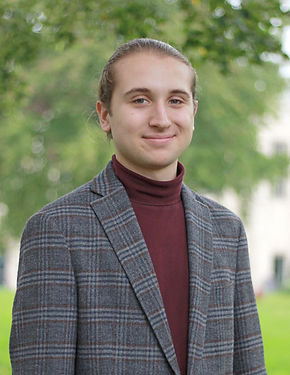
It seems crazy that Erich Maria Remarque’s “All Quiet on the Western Front” has never been adapted into a play—until now—and it’s right here at the University of Toledo. It’s been 90 years since the novel’s first printing, 88 since its first film adaptation and 100 since the end of the war it narrates. So why now? And why UT? I hoped to have these questions answered at the world premiere of All Quiet, at the Center for Performing Arts two weeks ago.
The year 2018 marks a significant anniversary. And perhaps this is enough to justify a new version of an old story. I myself had a hand in programming the upcoming film screening of Charles Chaplin’s WWI farce, “Shoulder Arms” (1918). With Veteran’s Day this week, the entire country reflects on the 100th anniversary of one of the greatest conflicts of all time.
For American audiences, All Quiet offers a particularly challenging discussion of war. The story focuses on a small regiment of young German soldiers struggling to comprehend the significance of their service within the dehumanizing chess game of international conflict. Empathizing with the German side inverts the pattern of pathos American audiences typically recognize. Sadly, 100 years later, this remains true.
But I struggle with the arbitrary number “100” alone. Fine as it may be to honor and reflect upon tragedy, these pursuits can often suffer as glib or ill-informed revivals for-the-sake-of revivals, unless modern commentary exists to contextualize the older works into the present.
Thankfully, writer/director Matthew Foss does not hesitate to take risks with his brand-new adaptation of the classic story. Successful or not, these risks certainly offered a fresh and engaging night of theatre for an enthusiastic and diverse crowd of students, faculty and local Toledoans.
The most conspicuous of these risks became apparent to me immediately upon entering the Center Theatre—there was almost no scenery. UT has a pretty good track record with spectacular set design (even in not-so-spectacular productions), but here, a prime opportunity for expressionistic tableaus of battle trenches, we are presented with close to nothing. Instead, student designer Kevin Upham presents minimalism: several moving, wooden tables and a few lights hanging from the catwalk above.
The house lights went down, an army of actors filled the stage and chalk sprayed everywhere, covering the stage floor like fresh paint. Suddenly, the benign bareness of the scenery became irrelevant. The violence of movement before me changed my perception of the theatrical environment, just as war altered the young soldiers in the story.
Foss staged his actors with dance-like motions. The actors moved Upham’s minimalist table-sets around as they danced, suggesting new scenery as the plot progressed. While I appreciated the attempted choreography and ambitious use of theatre space, I felt that some of the scene changes were a bit clunky. The bulkiness of the tables on stage conflicted with the fluidity of the actors’ movements and ultimately fell flat.
Coupled with this curious risk was Foss’s implementation of 1960s and 70s rock music. As I stated earlier, the 100th anniversary of WWI requires a stronger justification than merely the date alone. Updating the classic story with more recent music appears to bridge the gap. However, the music was not recent enough to effectively tie the narrative to the conflicts of today. Bob Dylan’s “Masters of War,” which recurred twice during the production, evokes protest against the Cold War and nuclear development more than relevant conflicts. Because music cued Foss’s choreography, I saw this as an honest attempt but missed opportunity.
As per usual, UT’s cast really appears comfortable interacting with each other on stage. Many professional productions lack the empathetic understanding UT’s actors clearly have for one another. While they may not demonstrate the experience and developed timing of more experienced actors, the chemistry and organic interactions between characters is always really special to see.
Capitalizing off of this fluidity, Foss realized a surprising amount of physical comedy and humor, breaking up the tragic nature of the story. This mostly worked very well, despite a few inappropriately modern jokes that took me out of the time period. Humor and fluidity really made this 100-year-old story relevant for me.
While I am still unsure of some of Foss’s political implications, the sight of gunpowder and blood, the smells of church incense and the deafening sounds of solemn quiet brought this tale to the present moment in a sensually extravagant experience. I think many of Foss’s risks can spur debate among the audience, forcing them to bridge the gap between 1918 and 2018, rather than the content of the play itself. The choice is ours, and I’m glad Foss was able to give it to us.

